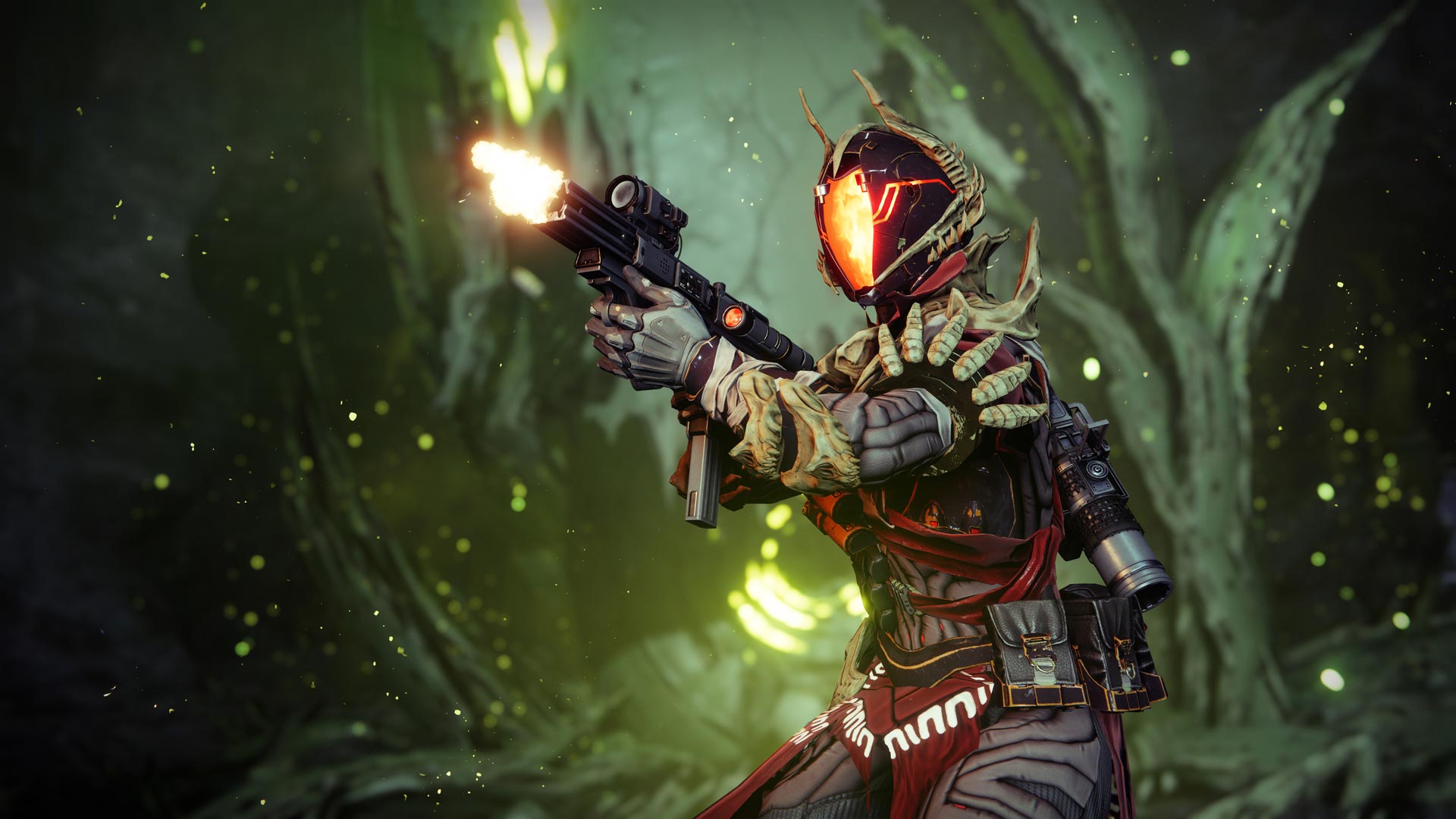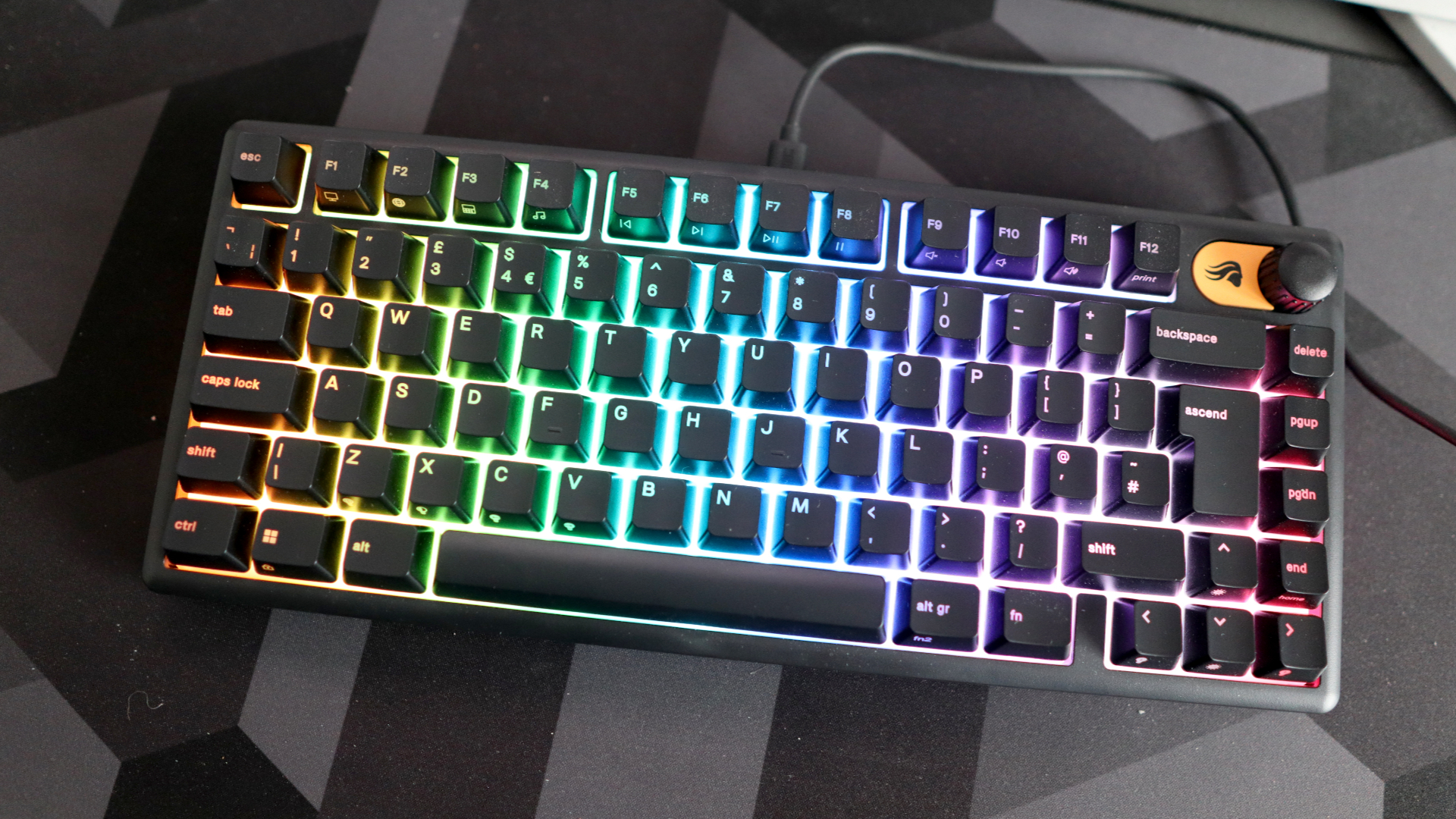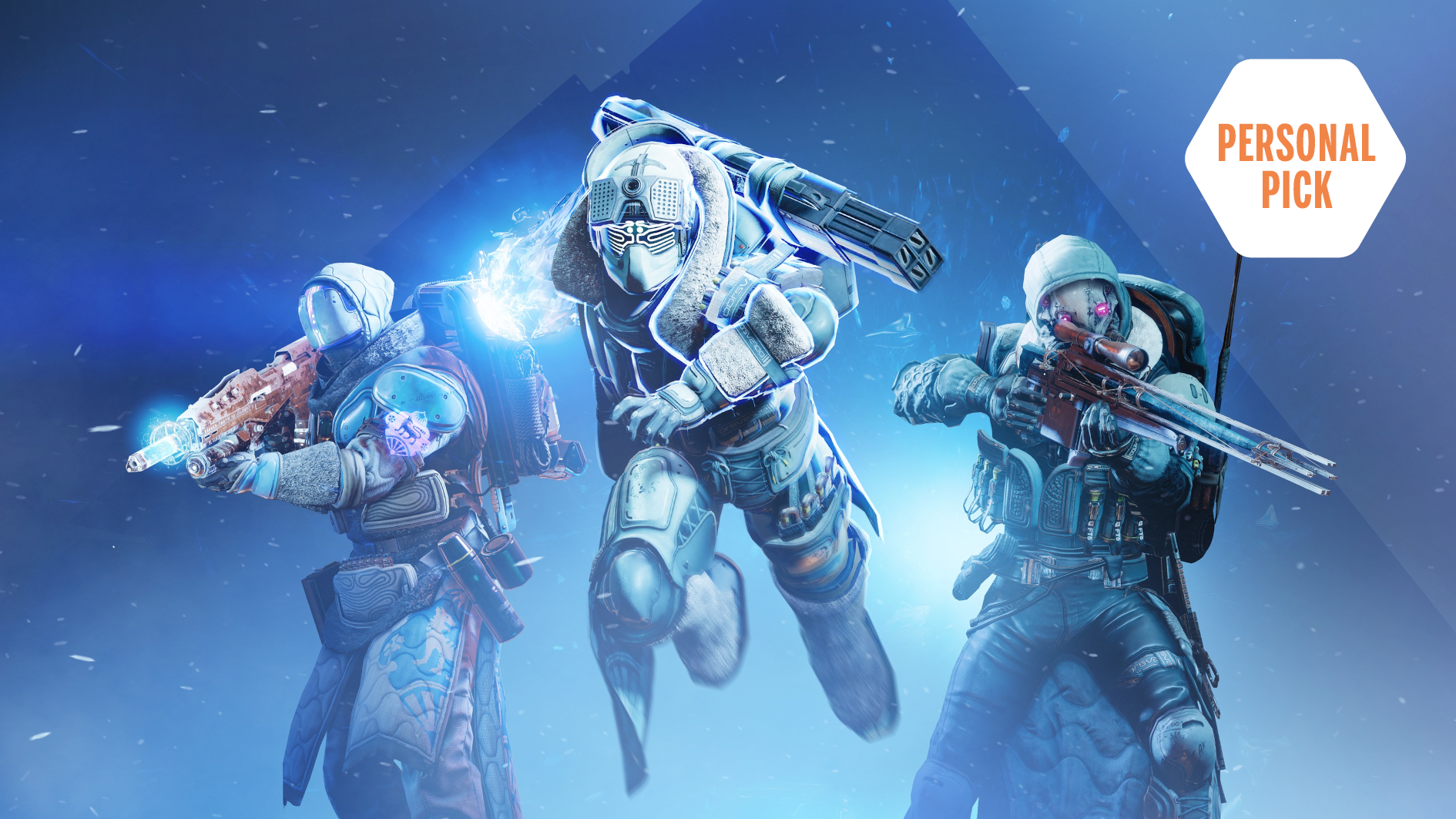
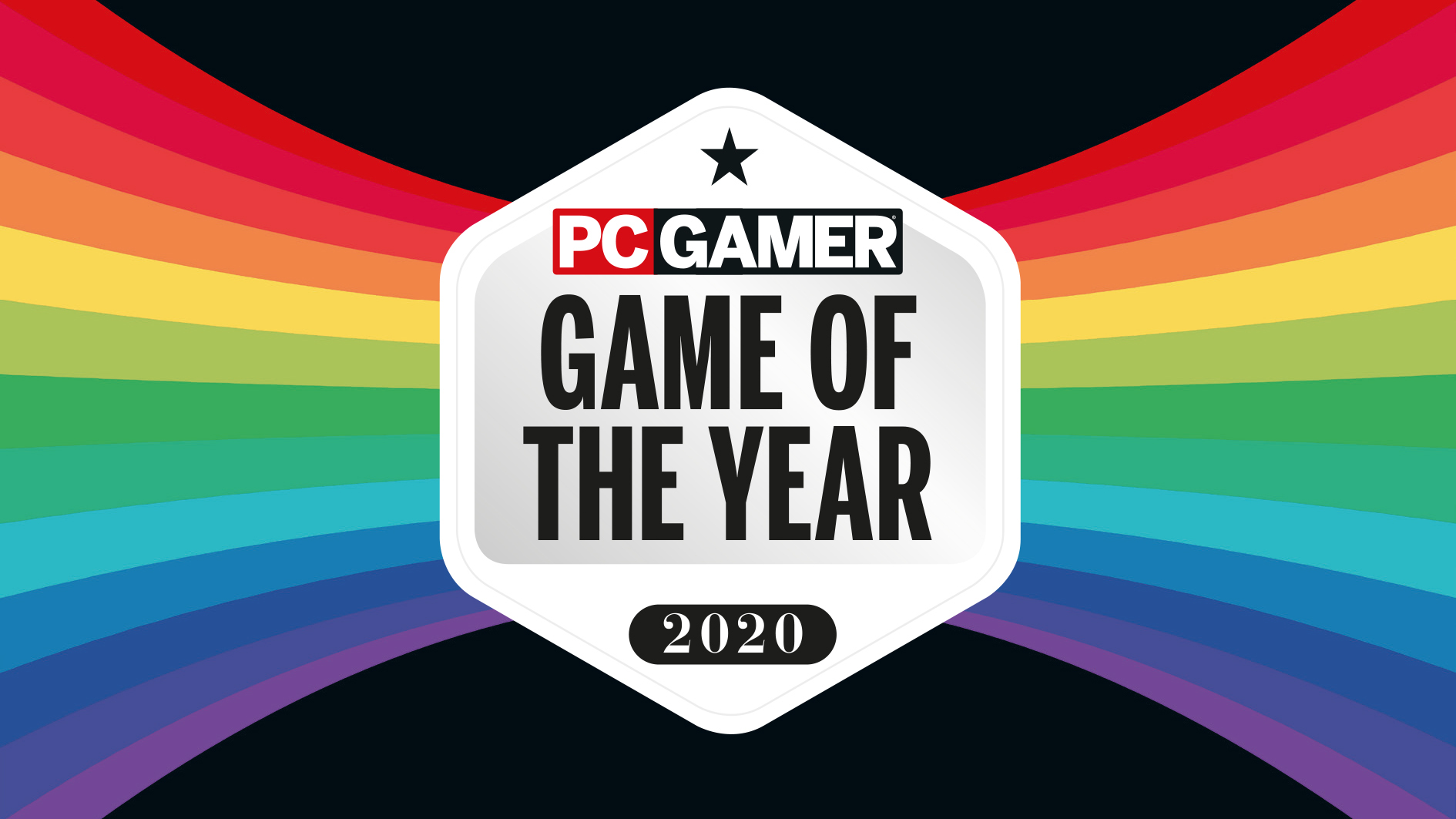
In addition to our team-selected Game of the Year Awards 2020, individual members of the PC Gamer team each select one of their own favourite games of the year. We'll post new personal picks, alongside the main awards, throughout the rest of the month.
It seems perverse to look back on a year in which Destiny 2 forcibly removed vast swathes of content, including plenty from paid expansions, and declare myself largely happy with both the state of the game and direction of travel for it. But here we are. Before we get into what got lost on the way, let's talk about what was added.
This year's big fall expansion was Beyond Light, which—as has ever been the case—was charged with both course correcting the systems that had been rustling players' jimmies over the past year and adding enough exciting new activities and ideas to make them want to remain on the hook for another 12 months.
Straight out of the gate let's just say that Beyond Light was substantially better than 2019's somewhat anaemic Shadowkeep, the big draw being the addition of Stasis—the first new 'element' since the series began. Stasis powers are granted to guardians by The Darkness, the antithetical force to The Traveller, the game's light-granting beach ball. The Darkness is represented in-game by a fleet of pyramidal ships which arrived (incredibly slowly) over the course of the year, but only really made their presence meaningfully felt with the launch of Beyond Light, when they swallowed—ie, deleted from the game code—five destinations and their associated activities, including the entire vanilla campaign.
Destiny 'n' chill
Stasis essentially works like cosmic ice: slowing, freezing and shattering enemies. Though it's given to us by the nominal bad guys (or are they?), as Phil noted in his review, from usage alone Stasis doesn't feel expressly evil. It is however powerful. Like the freeze every motherfucker in the room and then instasplode them into teeny tiny crystals then do it all again because your abilities have already recharged powerful.
Compared to the OG 'Light' subclasses, Stasis came in very hot. Which wasn't a huge surprise, given that you can't really afford for the capstone of your expansion to underwhelm. The Warlock ranged freeze melee had to be nerfed almost immediately, and all three Stasis classes only got stronger over the first couple of weeks as players unlocked the 'Aspects' and 'Fragments' of the new skill trees, which were more modular than their Light equivalents.
Stasis is a major reason why Beyond Light feels like a much bigger deal than Shadowkeep. Destiny 2 functions at its best when it's giving players a toy box of new gizmos and abilities to goof about with, and the flashier the better. But Beyond Light also delivered plenty of nuanced quality of life improvements, the effects of which will be felt long into 2021. Build crafting is my jam, so the decision to untether many weapon mods from requiring an armour piece of matching elemental affinity was a blessed relief. As was the creation of a new 'combat mod' slot which can be used with the Charged With Light and Warmind Cell systems.
Warmind Cells are so strong that if they'd been more widely used they would have been nerfed a long time ago.
That might sound like particularly nerdy small potatoes, but both those systems are incredibly powerful. Unfortunately, they'd been barely touched by lots of players because they seemed too opaque and fiddly. I'd actually argue that Warmind Cells are so strong—dead enemies basically drop red barrels that can nuke entire rooms and be specced to give other upsides—that if they'd been more widely used they would have been nerfed a long time ago.
Keep up to date with the most important stories and the best deals, as picked by the PC Gamer team.
The joy of deterministic loot
In the interest of brevity (I know, lol, etc.) here's a list of other things I liked about Beyond Light:
- All the new exotics could be earned in a deterministic manner. The armor pieces drop from the excellent higher tier difficulty Lost Sectors, The Lament sword comes from a quest line, the CloudStrike sniper rifle is tied to the Empire Hunt activity, and so on. That meant that you could log on and really decide what you wanted to chase.
- The same goes for the new Europa destination weapons, which you can grind out using bounties from Variks. The sandbox team outdid itself with the new weapon perks. Stuff like Surplus, Wellspring, and One For All made for interesting synergistic loops, and it's clear Bungie wants to move away from the reload speed+increased damage combo that has become boringly ubiquitous.
- The raid weapons are even better. God tier perks like Reconstruction (your weapon slowly reloads itself to double the normal capacity) and Recombination (kills with your other weapons create a stacking single shot buff) have made the Deep Stone Crypt the most compelling loot chase Destiny 2 has had to date.
- Speaking of the raid: it's so good. I mean, they always are, but aside from some wonkiness with the second encounter on day one, it really feels like Deep Stone Crypt is an experience anyone who loves shooting stuff on PC would get a huge kick from. [Minor spoilers incoming] One encounter has members of the team jetting back and forth from an orbiting space station during the fight. Another involves a Moonraker-style space walk. There's been deserved criticism since that the combat component is actually a little too easy, but if that's what it takes to get more players to dip their toes into raiding, I'm all for it.
You'll note that much of the above relates to loot. When I spoke to game director Luke Smith last month, he asked me what the biggest issue with the game was. My reply was that the loot had never quite felt right in all of Destiny's life. Over various periods there either hasn't been enough, or it wasn't exciting enough (thinking mainly of the base game here), or the path to obtaining what you actually wanted was Byzantine. Which isn't to say Destiny 2 doesn't have great guns. In fact it has many of my favourite videogame weapons of all time. But the cadence and distribution of them has often been out of whack.
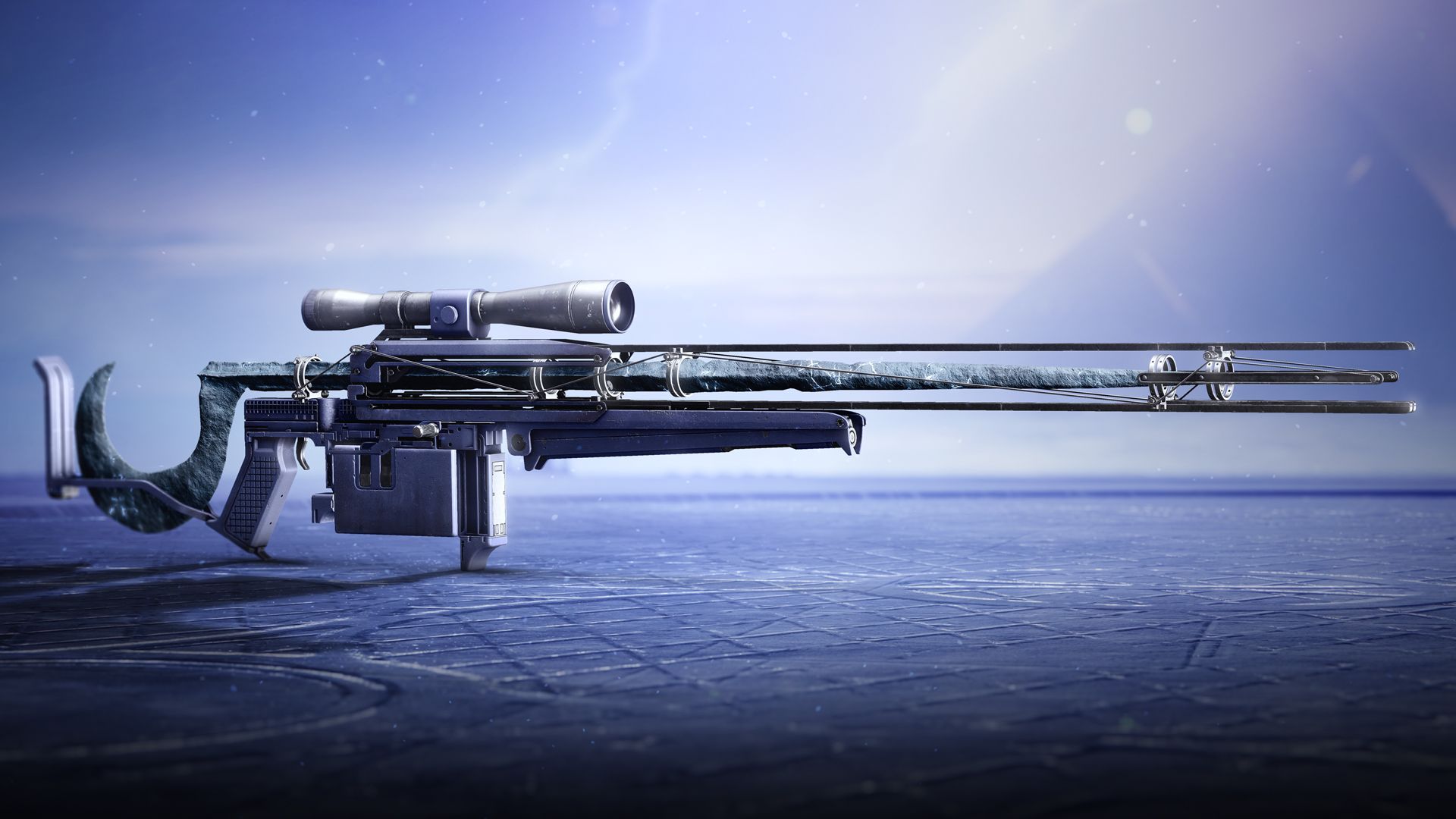
Strides have been made in previous seasons, with mechanics like the Seraph Towers and Umbral Engrams designed to enable players to target specific weapons and even perk combos. Recently, assistant game director Joe Blackburn addressed the issue directly, saying that Bungie planned to hire developers to pump out more guns.
The studio also doesn't half make it hard for itself sometimes.
Which is all well and good, but the studio also doesn't half make it hard for itself sometimes. With Beyond Light came the Orwellian-sounding Destiny Content Vault, into which those planetary destinations I mentioned earlier were placed. The aim being to reduce game bloat, both in terms of file size and the sheer amount of content the dev team has to monitor, update, and test new gear and abilities against. As part of this process also came weapon 'sunsetting', which saw guns have their power capped according to which season they had been released in. Essentially it meant that all weapons, aside from the exotics, now have a shelf life when it comes to endgame content.
There's an easy analogy to draw here with Hearthstone, my other great gaming love. Blizzard eventually adopted set rotation that saw cards cycled out of the Standard mode to free up design space for new ones. So the same logic goes for guns: At some point, in order to be able to make an interesting new 180rpm hand cannon, you need to ditch the old ones. Predictably this caused much weeping and gnashing of teeth among a community which had grown accustomed to keeping its favourite gear forever. I was largely onboard with sunsetting in theory, but also deeply sceptical about whether the studio could adequately fill the gap left by so many items leaving simultaneously.
In Blackburn's same blog he admitted that "there were a few clear-cut misses with our first rollout," adding that: "The initial reward pool with this release was just too small." It reminded me of a comment I read to the effect that when Bungie makes a big systemic change, the intention is often smart, but in the execution the team swings too hard and overshoots, resulting in more time spent redressing the balance. Such are simply the perils of development I guess, but it does seem to be a pattern for the studio.
My biggest gripe with sunsetting is specifically that it has rendered several of the activities and destinations irrelevant because their rewards are already sunset. To my mind the gear which comes from The Dreaming City and The Moon should remain at cap for however long they're available. To stick with the card game analogy, they could be treated as a starter set—it's not like any of that stuff was particularly problematic anyway. And if we're being really honest, I do miss Io, Titan, Mercury and Mars a little bit. I'm a bounty goblin, so miss being able to pick from different sandboxes and more lost sectors when grinding out XP. Likewise I would argue the game would have been better served by keeping popular elements such as Menagerie and The Tribute Hall over some of the stuff that stayed.
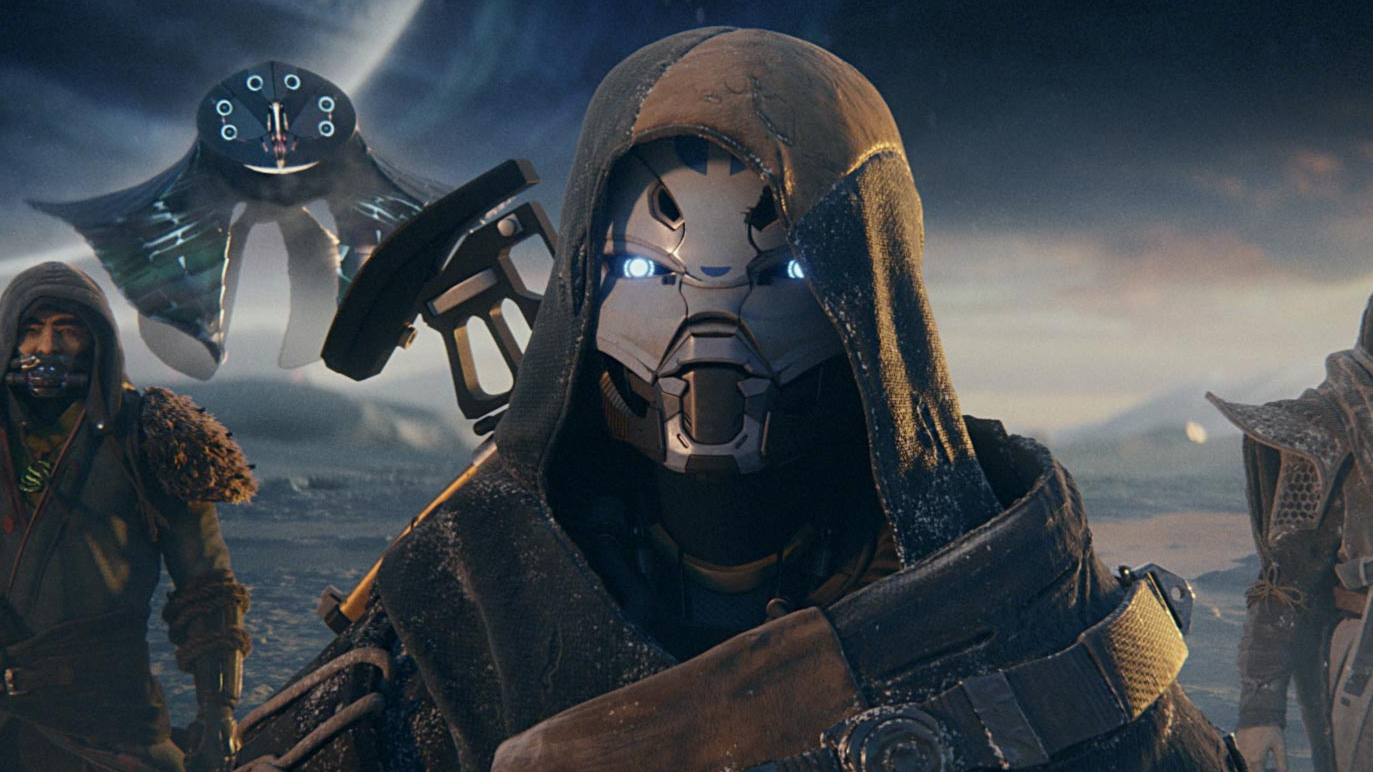
The return of The Stranger
And so we find Destiny 2 now. As it always is: not perfect, but once again on the path to somewhere that feels very promising. It's also notable that Destiny remains so strong, so fascinating, and yes at times so frustrating, when so many other supposed competitors have fallen by the wayside. The live service looter shooter genre is not to be entered lightly.
Before we close, I should also note that the oft-maligned storytelling took a giant leap with Beyond Light. The return of Elsie 'The Stranger' Bray tugged on multiple cool narrative threads that had been dangling for years, and—borderline miraculously—when pulled these formed a fascinating story about the birth of Destiny 2's cybernetic Exo race, the nature of the Vex threat, and all sorts of other delicious deep lore cuts. Huge credit should go to the writers for not just managing to bring The Stranger back—previously best known for meme-worthy circuitous doublespeak—but managing to make her cool, interesting, and even weirdly relatable for anyone with substantially problematic grandparents.
With two more years of seasonal content interspersed by big autumnal expansions planned—The Witchqueen in 2021, then Lightfall in 2022—the challenge will remain how to deliver enough sufficiently engaging stuff in-between. If I had to guess, that will happen much as it has before. Manic bursts of brilliance, inevitable stretches of banality, and almost no downtime from me. Since it launched on PC I've played Destiny 2 more than any other game, and by a frankly uncomfortable amount. Sometimes my fingers literally ache from it. And here I am, thinking about booting it up on the sly now, itching to atomise aliens with the Eyes of Tomorrow rocket launcher I snagged from the raid recently. This is what people mean by forever games. It's CS:GO for some, WoW for others, but for me it really is Destiny.
With over two decades covering videogames, Tim has been there from the beginning. In his case, that meant playing Elite in 'co-op' on a BBC Micro (one player uses the movement keys, the other shoots) until his parents finally caved and bought an Amstrad CPC 6128. These days, when not steering the good ship PC Gamer, Tim spends his time complaining that all Priest mains in Hearthstone are degenerates and raiding in Destiny 2. He's almost certainly doing one of these right now.
